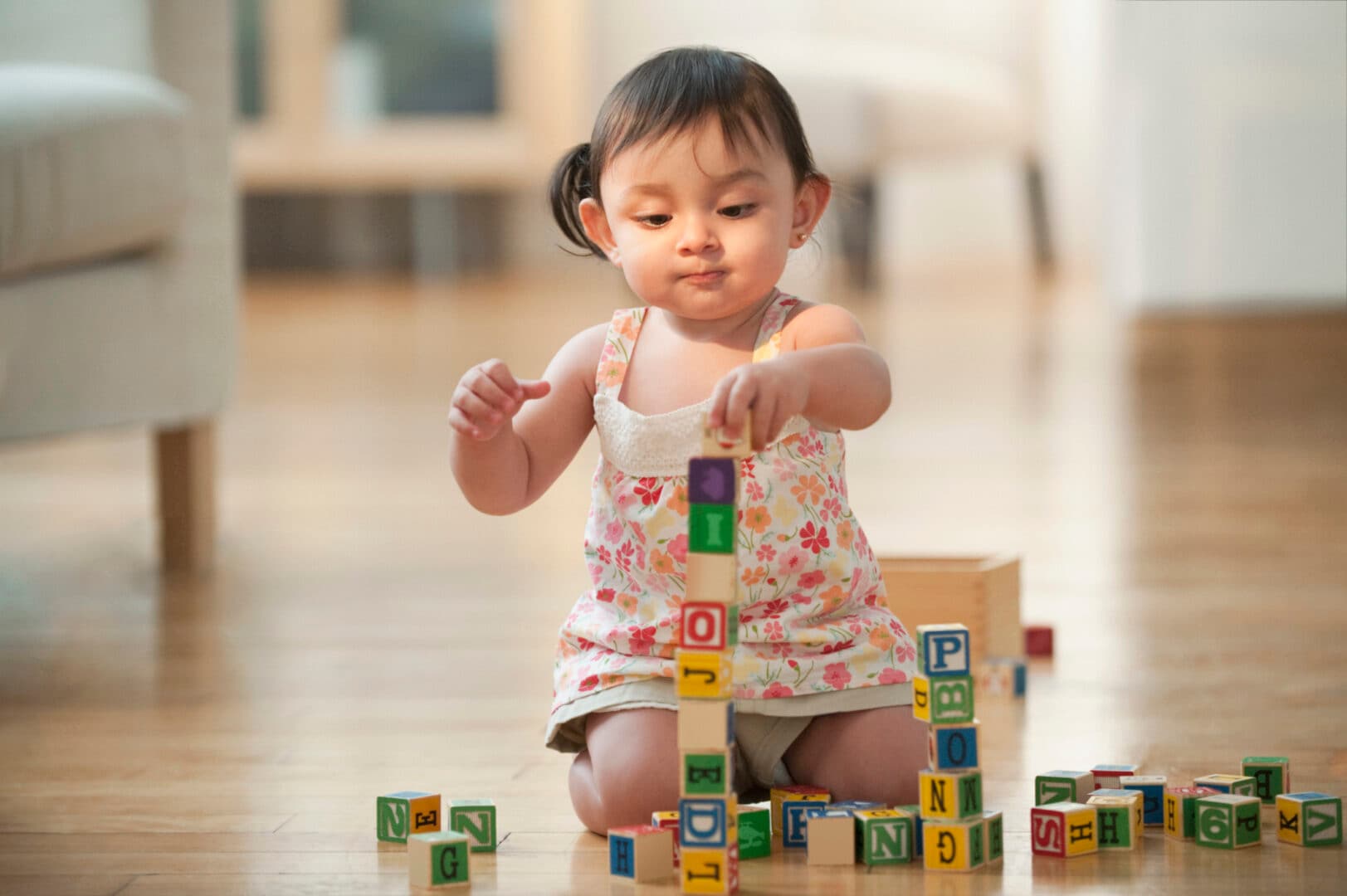When children turn 1, they become a walking, talking little adventurers — and it’s up to you to encourage them. One-year-olds are looking to explore the new, exciting world around them, but that doesn’t require expensive or elaborate toys.
Whether it’s fantasy play, imitating the grown-ups or other activities, focus on communicating with little ones. “Keep games and toys simple and uncomplicated,” suggests Susan Newman, social psychologist and author of “Little Things Long Remembered,” “And laugh and talk as you play.”
Make sure to pay attention to their level of interest versus frustration, says Marina Koestler Ruben, author of “How to Tutor Your Own Child.” “A little challenge is good,” she adds, “but if your child stops the activity out of frustration … it may be too difficult.”
For activities that perfect for the 12-month stage of development, try one of these seven games for 1 year olds.
1. Play make-believe
Around their first birthday, children begin to engage in make-believe, and, according to Ruben, encouraging this fantasy play will help with development, imagination and even language skills.
Newman agrees: “One-year-olds have reached a point of being fairly mobile, so exploring their world is all important. They need objects to feel, move, smell and maybe taste that the parent can then supply labels for. These labels are the root of increased language ability.”
Start simple by handing kids their favorite stuffed animal, recommends Ruben. Then name something in the room, and ask kids to show their toy where the item is and bring it back.
2. Pretend on the telephone
All you need for this game is a couple toy or non-working phones, or make-believe phones (try a banana or a hairbrush). You’ll both take a phone and take turns talking back and forth.
“Opportunities to imitate the parents with concrete objects, such as toy telephones, having a steering wheel in the car or stroller or pushing toys such as a shopping cart, will help them understand roles and relationships,” says Dr. Patricia McGuire, a developmental and behavioral pediatrics specialist.
According to leading play specialist Stevanne Auerbach, also known as Dr. Toy, telephone games can help children enlarge their vocabulary to speak in sentences sooner.
3. Build with blocks
Have 1-year-olds sit on the floor, and place a handful of blocks in front of them. You can encourage them to make short stacks with the blocks by building them yourself and showing them how. As they become more adept, increase the stack height or have them make stacks with only the red or blue blocks, for example.
“Toys that invite the child to feel different … shapes and colors with [grown-ups] providing the language as well as knowledge of how one item may be similar to another — ‘See they are both red’ — will help him notice his world more,” says McGuire.
When playing blocks with a 1-year-old, it’s crucial to pick out blocks that are easy for them to grasp, said Auerbach. Look for larger blocks made of cardboard, sponge or foam in particular, and try to find ones that are colorful or have pictures on them.
4. Play simple hide-and-seek
Peek-a-boo can advance into simple games of hide-and-seek where you hide behind a nearby chair or piece of furniture in the same room and ask if they can “find” you.
“Games that are most helpful to 1-year-olds are child-led interactive games of hide-and-seek or peek-a-boo, turn taking and imitation,” says Dr. McGuire. “These games help the child explore the concepts of permanence, social interaction and role modeling.”
5. Learn patty-cake
Patty-cake requires nothing but hands and voices. Sit facing one another and show kids how to clap hands to make the sound, and sing the song as you do it.
This game combines two essential child development processes: music and motor functions. Experiences in music are important to the child, says Auerbach, as they can teach rhythmic movement. Patty-cake can also teach hand-eye coordination.
6. Pour waterfalls
This activity might get a little wet, so you can try it during bathtime. “Young children like pouring,” says Ruben. “So I recommend a game where they and [grown-ups] pour water back and forth between containers.”
Start simple, moving water from one container to another, and then add different shapes and sizes of containers and talk about how each of them differs.
7. Experiment with a racetrack
Set up a simple “racetrack” at home — a piece of wood or even cardboard leading from a table to the floor will work. Have kids put a toy car on the track and watch it ride down to the base. “Toys that allow more directed manipulation to complete an action … teach cause and effect,” says McGuire. As the child develops and grows, they can better interact and manipulate the world around them with this understanding.
The key for playing with 1-year-olds is simplicity and communication. Keep the games uncomplicated and talk them through what they’re doing every step of the way.
Caitlin White is a freelance writer whose work has appeared in The Huffington Post, Bustle, and HelloGiggles. You can reach out to her on Twitter caitforestell.






